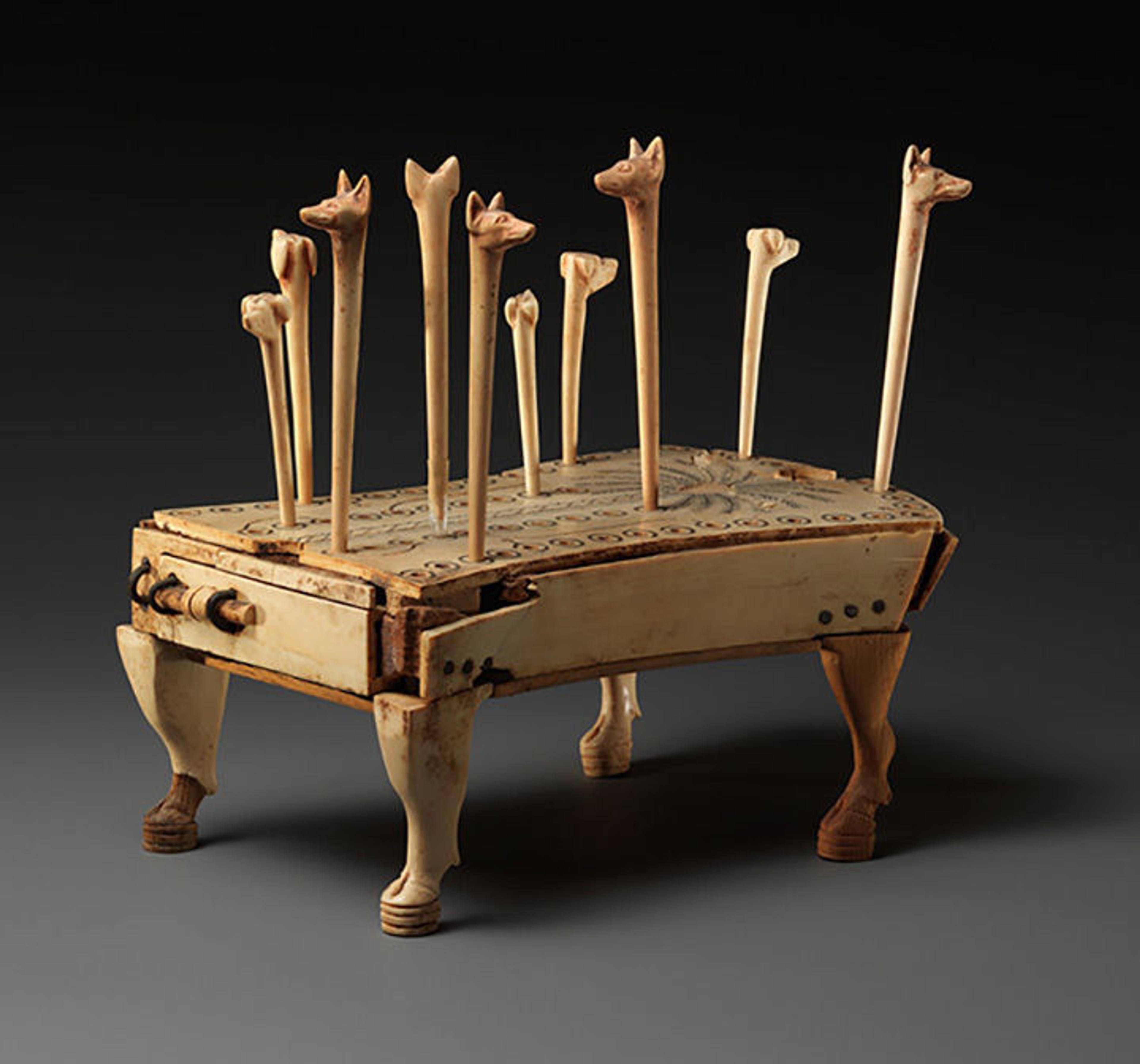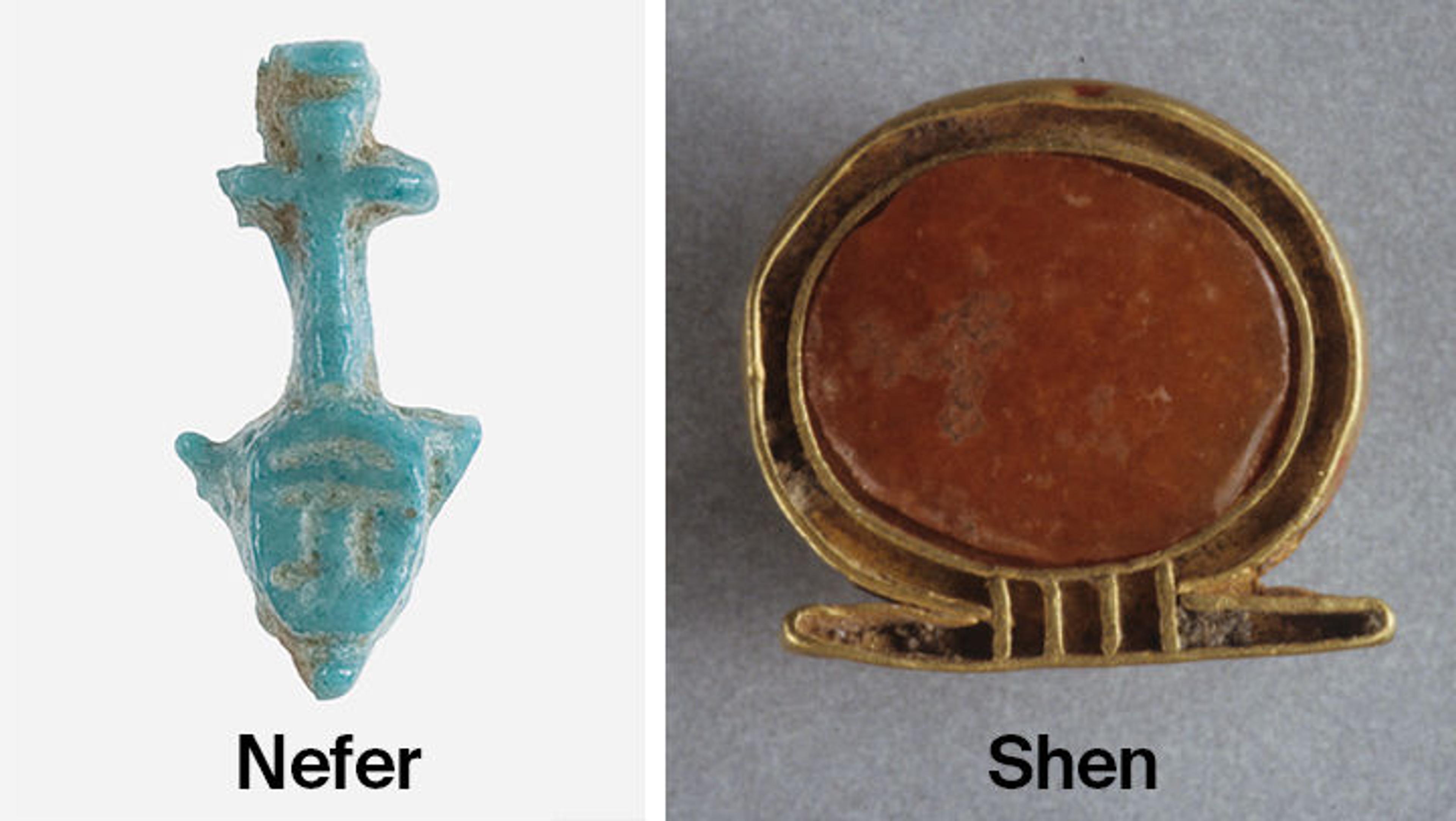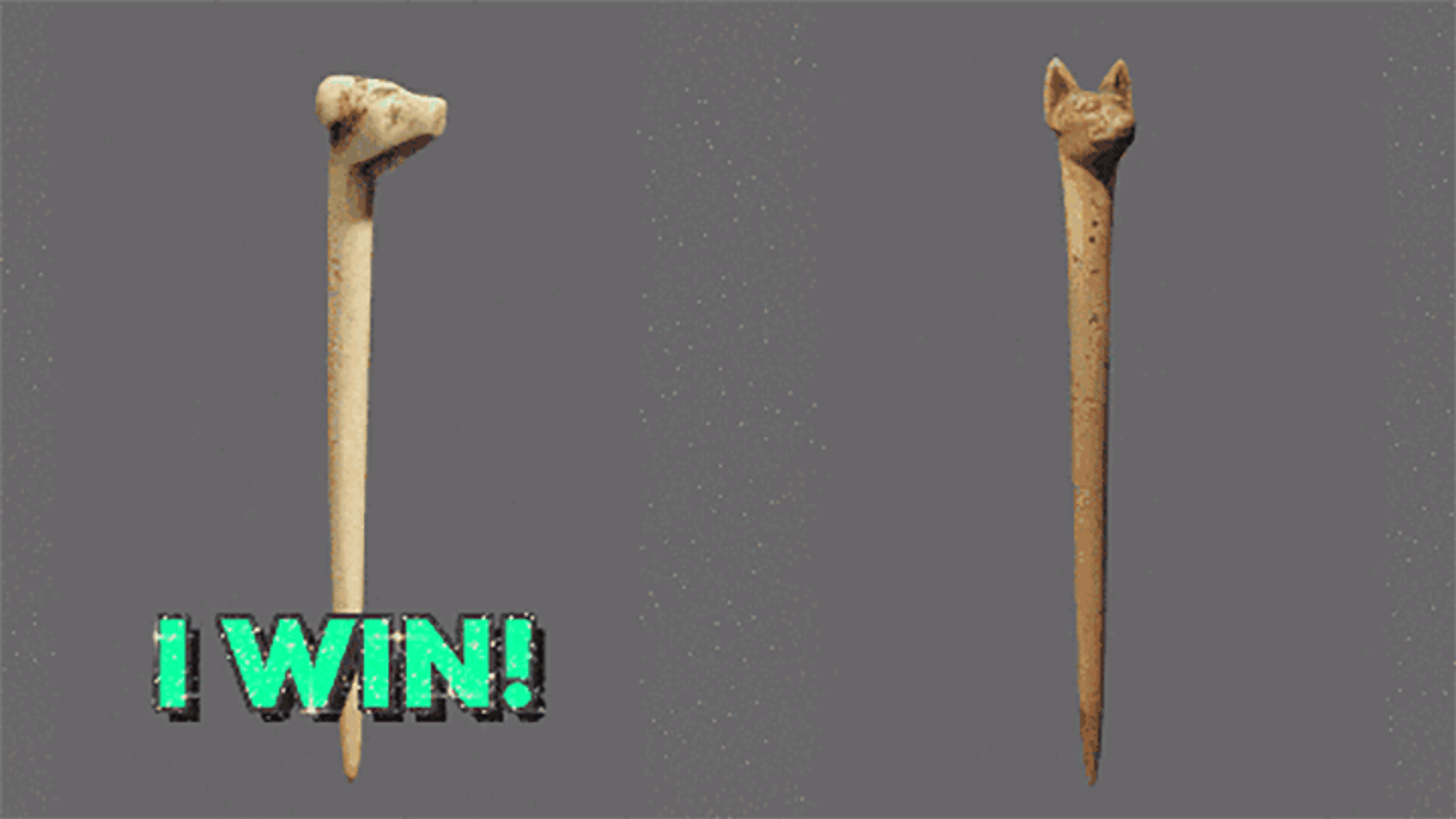The ancient Egyptians loved to play games, just like we do today. Over the past two centuries, archaeologists have discovered different types of toys that the Egyptians played with during their lifetime. Many of these finds included board games that probably were played by people of all ages and wealth. You can find several examples of these board games at The Met, like the game of Hounds and Jackals in gallery 111!
What Do You See?
This board game is shaped like an axe-head or a shield and features a large palm tree on the top surface. Surrounding the tree are 58 holes arranged evenly around the edges. In some of the holes, there are playing pieces with the heads of two different types of canines: hounds and jackals.

Game of Hounds and Jackals. Middle Kingdom, Dynasty 12. Reign of Amenemhat IV, ca. 1814–1805 B.C. From Egypt, Upper Egypt, Thebes, Asasif, Birabi, pit tomb CC25, debris, Carnarvon/Carter excavations, 1910. Ebony, Ivory, Board: H. 6.8 cm (2 11/16 in); W. 10.1 cm (4 in); D. 15.6 cm (6 1/8 in); Average height with pins: H. 14 cm (5 1/2 in); Jackal pins: H. 7 cm (2 3/4 in) to 8.5 cm (3 3/8 in) Bottom (2012. 508): L. 12.9 cm (5 1/16 in); W. 7.4 cm (2 15/16 in); Th. 0.3 cm (1/8 in) Hound pins: H. 6 cm (2 3/8 in) to 6.8 cm (2 11/16 in). The Metropolitan Museum of Art, New York, Purchase, Edward S. Harkness Gift, 1926 (26.7.1287a-k); Gift of Lord Carnarvon, 2012 (2012.508)
How Do You Play?
Archaeologists found this game in the tomb of an official named Reniseneb. This game is probably played liked today's Chutes and Ladders. The course probably started in the middle of the board, underneath the palm tree leaves. The two players would race each other, moving their pieces down and around the outer edge and up to the larger hole at the very top. To move, the players would roll knucklebones. Like dice, knucklebones tell the players how many spaces they can advance. Each side represented a different numerical value.
As each player moved, their hound or jackal would be affected by the links between the holes and the hieroglyphs on the game board. The links were either shortcuts or penalties that could send a playing piece forward or backward, just like Chutes and Ladders. Some of the holes are marked with Egyptian writing (hieroglyphs), and it is believed that the holes marked with the sign for good, nefer, were beneficial to the players that landed on them. The game would be over when all of a player's pieces reached the big hole at the top, which was surrounded by a shen, the hieroglyphic sign for eternity and protection.

Nefer is the sign for good. Shen is the sign for eternity and protection. Left: Fragment of amulet with nefer sign. New Kingdom, Dynasty 18 (early). Reign of Amenhotep III, ca. 1390–1353 B.C. From Egypt, Upper Egypt, Thebes, Malqata, Palace of Amenhotep, MMA excavations, 1910–11. Faience. H. 1.2 cm (1/2 in). The Metropolitan Museum of Art, New York, Rogers Fund, 1911 (11.215.198). Right: Shen (Protection) motto clasp. Second Intermediate Period. Dynasty 15, ca. 1648–1540 B.C. From Egypt; Possibly from Eastern Delta. Gold, carnelian, H. 1.1 cm (7/16 in); W. 1.3 cm (1/2 in). The Metropolitan Museum of Art, New York, Purchase, Lila Acheson Wallace Gift, 1968 (68.136.23)
Why Is This Game Important?
The game of Hounds and Jackals was important to Egyptians who lived during the Middle Kingdom (approximately 4,000 years ago). Egyptologists know this because they have found many examples of these game boards at Middle Kingdom archaeological sites. This game is usually found in tombs, which might tell us that the game was not only played because it was fun, but also because it had a symbolic meaning.
The ancient Egyptians believed in an afterlife, which means existence after death. To have a good afterlife, a person who died would have to complete certain rituals to please the gods and enter the underworld. We know that some games represented a successful trip to the afterlife, so the game of Hounds and Jackals could have represented the journey to the afterworld, too. The player who reached the shen sign may have not only won the game, but also successfully completed the transition from this life to the next.
Got your game face on? Challenge your friends or family members to play your favorite board game. Leave a comment and let us know what game you played!
